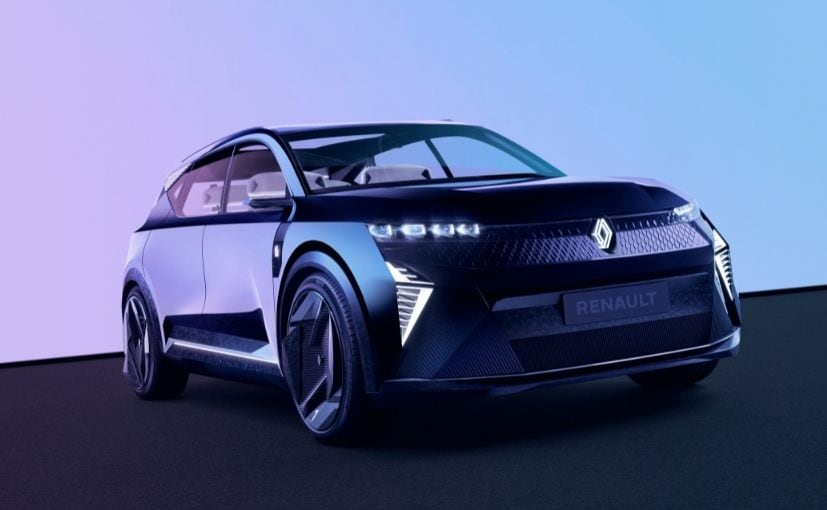Renault’s most successful model, the Renault Scenic returns in a brand-new avatar. An electric avatar to be specific, as the Renault Scenic is showcased as a Vision Concept Car, with a global debut scheduled for 2024. The all-electric Renault Scenic Vision Concept Car is based on the CMF-EV platform and will be 4,490 mm long and 1,590 mm high. The upcoming Renault Scenic Vision Concept Car features a more modern, more linked to brand identity, but also more sustainable, as it is a mix of futuristic technologies and styles, in which environment, safety, and inclusion are at the heart of the design. The Renault Scenic is showcased as a Vision Concept Car, with a global debut scheduled for 2024. Also Read: Renault-Nissan-Mitsubishi Alliance Say To Deepen Cooperations In EV Production In the wake of the strategic partnerships established by the Renault Group, the Renault Scenic Vision concept car takes advantage of all the roads identified and aims to reduce the carbon footprint of batteries by 60 per cent, both through the decarbonisation of the energy used for assembly and through more responsible sourcing. The Renault Scenic Vision concept car is therefore equipped with a hybrid engine, both electric and hydrogen. A new generation engine, a small battery, and a fuel cell powered by green hydrogen ushers in a new era of mobility, which the Group believes is feasible for the next decade. The all-electric Renault Scenic Vision Concept Car is based on the CMF-EV platform and will be 4,490 mm long and 1,590 mm high. Also Read: Renault-Nissan To Do More Together In $26 Billion Electric Bet Renault’s Scenic Vision derives directly from that of New Megane E-Tech Electric and will be built at the Cleon plant. The new EV will not use rare earth, thus contributing to the reduction of the carbon footprint and the creation of a responsible and sustainable ecosystem. The 40-kWh battery is recyclable and will be produced in France from 2024 in the ElectriCity Centre’s Gigafactory. The capacity is complemented by a 15-kW fuel cell which facilitates charging on long journeys. Thus, in 2030 and beyond, when the hydrogen station network is developed, it will be possible to undertake long journeys of up to 800 km. The foam, fabrics, and seams of the ecru-white seats are all made of a single material, made from 100 per cent recycled and recyclable plastic. Also Read: Back In The Black, Renault Looks To Tap Into Electric Boom Outside, the materials used– steel, aluminum, glass, and plastic– are all recyclable at the end of their life. Inside, everything has been responsibly designed. For example, the foam, fabrics, and seams of the ecru-white seats are all made of a single material, made from 100 per cent recycled and recyclable plastic, which easily detaches from the structure. . About 95 per cent of the materials that make up the concept car, including the battery, are recyclable. 0 Comments With the Flins Re-Factory and the Renault Environnement branches, the dismantling, and recycling of components and batteries will generate a turnover of over one billion euros in 2030. About 95 per cent of the materials that make up the concept car, including the battery, are recyclable. For the latest auto news and reviews , follow carandbike.com on Twitter , Facebook , and subscribe to our YouTube channel.
Top Trending
Saturday, July 27, 2024



